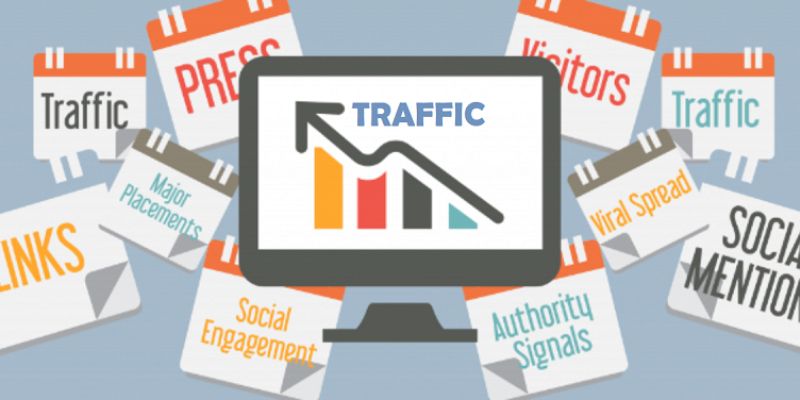Instructions for building an effective Traffic system for Website:
Building an effective traffic system is a key element in any business's digital marketing strategy. Traffic not only enhances brand recognition, but also plays an important role in generating revenue and conversions. Here are the specific steps to build a strong and sustainable traffic system for your website.
1. Research and set goals:
Before you begin, you need to clearly define the goals and audience that you want to target. This includes:
- Target audience: Understand who your potential customers are, what their interests are, what problems they are facing.
- Specific goals: Increase traffic, improve conversion rates, or build a brand.
Market research, user surveys, and data analysis can help you shape your strategy.
2. Search Engine Optimization (SEO):
SEO is a long-term strategy for attracting organic traffic. The basic steps include:
- Keyword research: Use tools like Google Keyword Planner, Ahrefs to search for keywords that have a high search volume and are relevant to your content.
- On-page SEO: Includes optimization of titles, meta tags, URLs, and content. Make sure that keywords are used naturally and logically throughout the entire page.
- Off-page SEO: This includes building backlinks from reputable websites, creating social media links, and writing guest posts.
3. Content Marketing:
Content is king in digital marketing. Provide high-quality content that helps attract and retain users. Strategies include:
- Blogging: Write useful detailed articles and solve readers' problems. Update the blog regularly with new content.
- Infographics and Videos: Use different formats to enrich your content and grab attention from different audience groups.
- E-books and reports: Provide free downloadable materials to collect potential customer contact information.
4. Social Media Marketing:
Social media is a powerful channel to drive traffic:
- Choose the right platforms: Focus on the platforms where your target audience is most active, such as Facebook, Instagram, Linkeedln, or TikTok.
- Schedule posts: Use tools like Buffer or Hootsuite to schedule posts regularly.
- User engagement: Respond to comments, participate in discussions, and use paid ad campaigns to increase presence.
5. Email Marketing:
Email marketing is an effective channel to maintain relationships with customers and drive traffic back to your website:
- Email Earnings: Use the sign-up form on the website, which provides free downloadable content to collect email addresses.
- Send newsletters: Provide updates, offers, and exclusive content via email.
- Audience segmentation: Send emails based on user interests and behavior to increase open rates and click-through rates.
6. Paid Advertising:
Use paid advertising to quickly increase traffic:
- Google Ads ads: Run search and display ads on Google to reach users when they search for relevant information.
- Social media ads: Use Facebook, Instagram, LinkedIn ads to reach your target audience with precise campaigns.
7. Optimize User Experience (UX):
Make sure that your website provides a good user experience to retain visitors:
- Page Load Speed: Optimize page load speed to reduce bounce rates.
- Responsive design: Make sure your website displays well on any device, including mobile phones.
- Easy Navigation: Improved website structure so that users can easily find the information they need.
8. Analysis and Adjustment:
Use analytics tools like Google Analytics to track and evaluate the effectiveness of your traffic strategy:
- User behavior tracking: See where stoppers are coming from, what they do on the site, and how they leave.
- Measure KPIs: Metrics such as conversion rate, time on page, and bounce rate to measure effectiveness.
9. Internal link strategy and backlink building:
Internal links and backlinks help improve SEO and increase traffic:
- Internal Links: Create links between articles and pages in your website to increase discoverability and improve SEO rankings.
- Backlinks: Build links from reputable websites to increase website credibility and rankings.
10. Use automation tools:
Automation tools help manage and optimize traffic strategies more effectively:
- Email marketing: Tools like Mailchimp or HubSpot to automate email campaigns.
- Social media: Tools like Hootsuite or Buffer to automatically post on social media.
- SEO: Use Ahrefs or SEMrush to track keyword rankings and analyze the competition.
Building a traffic system is not just a single job but a comprehensive strategy that combines many different methods. From SEO optimization, content marketing, to the use of paid advertising, and data analytics, they all contribute to boosting traffic and achieving your business goals. It is important to adjust the strategy to accommodate changes in the market and user behavior.


Đăng bình luận